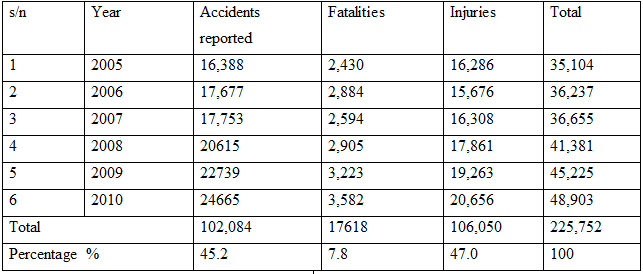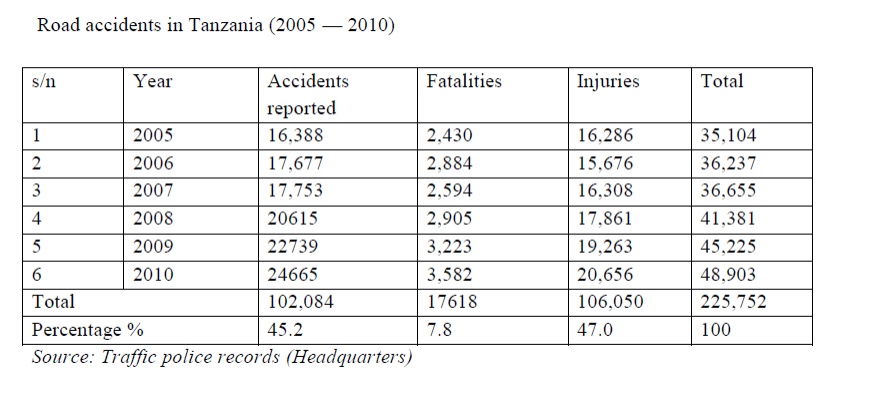ROAD SAFETY EDUCATION
The Meaning of Road or Traffic Signs
A road is a man-made pathway which enables vehicles, pedestrians, and even animals to move from one place to another. There are three types of roads – earth, gravel and tarmac roads.
Road safety refers to the general state of being safe from danger when using roads to move from one place to another. Roads are sometimes categorised as main and feeder (minor) roads. Road safety is the situation in which road users are free from risks and accidents.
Interpretation of Road or Traffic Signs
Road signs are international symbols which tell road users how to use the road properly. Some examples are warnings, like speed limit, a bending in the road, pedestrian or cattle crossings. The most common road signs are traffic lights, stop signs, no entry and speed bumps.
Road signs carry messages for road users through symbols, shapes and colors. Thus, road signs give instructions to road users so that the roads can be used properly and safely. Below are some of the road signs, followed by their interpretation.
Prohibitory signs
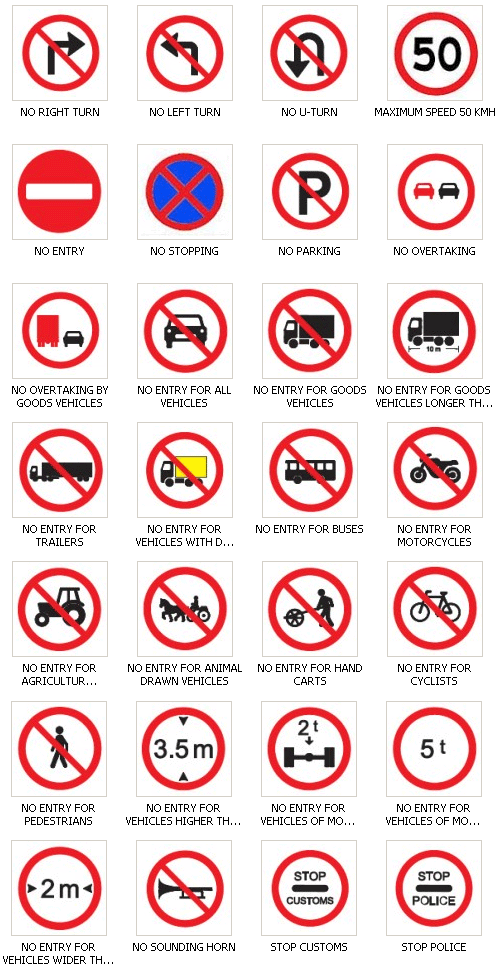
Mandatory signs
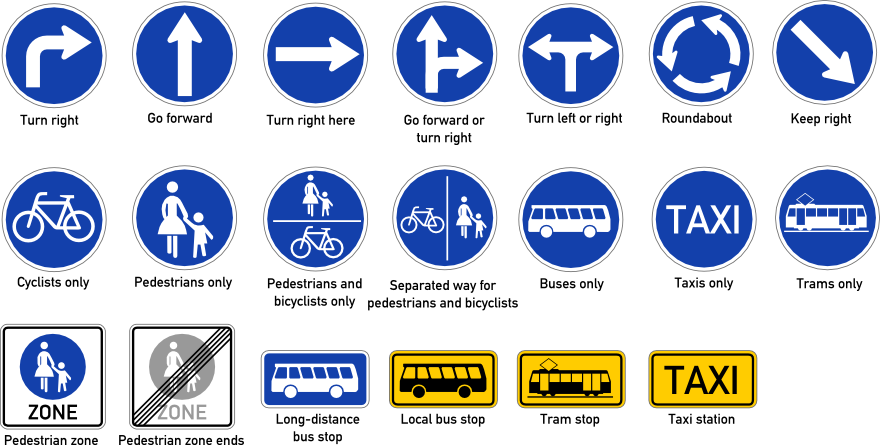
Dangerous mandatory signs
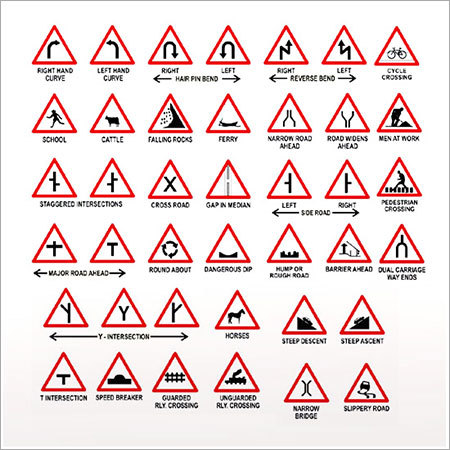
Informative signs
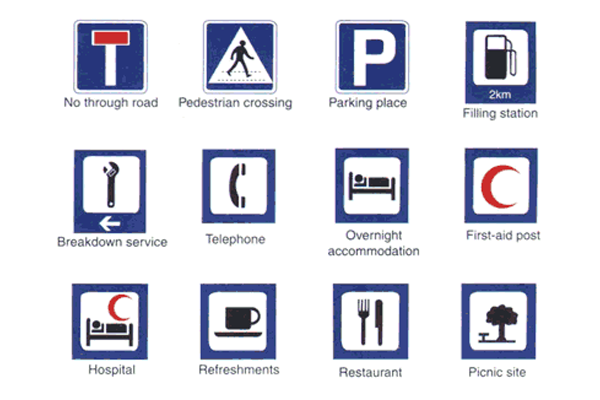
Police signals to drivers
A traffic policeman waving for vehicles coming from the side
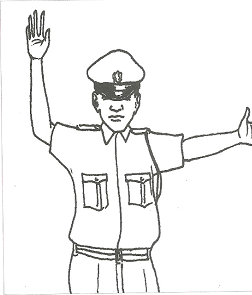
A traffic policeman waving for vehicles coming from the front
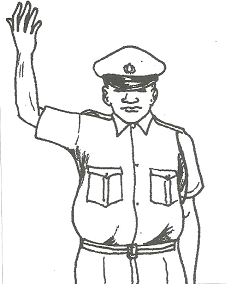
A traffic policeman
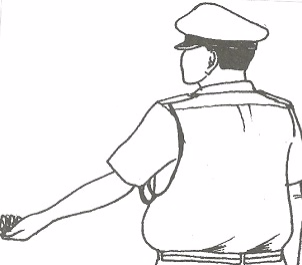
Categories of Road Signs
There are four types of road signs — prohibitory, mandatory, danger warning and informative signs.
Prohibitory and mandatory sighs
These signs help control the speed of road users. There are two types: those which allow (permit) and those which prohibit (limit). Those which permit are usually colored green while those which prohibit are in red. They are also enclosed in circles or octagons.
Danger warning signs
These signs warn road users to take proper measures to prepare for the danger ahead. They comprise of pictures and diagrams which show the dangers, e.g. a double bend warning motorists to slow down. The useful shape is triangles, and the color used is amber.
Informative signs
These signs are drawn on the road surface or fixed on a post by the roadside to give road users important information on how to use the road. They are also enclosed in rectangles, and a blue color is used for the information.
Importance of Obeying Road or Traffic Signs
Road signs are very important because they help prevent accidents as they give information to road users about what lies ahead. They also help to regulate the speed of road bends, vehicles and avoid traffic congestion, especially where roads intersect.
Additionally, road signs provide equal rights to road users and equal access to use the roads, e.g. cattle and pedestrian crossing signs. They also tell drivers how to use the roads properly for the safety of other road users. Lastly, they reduce the burden of using many traffic police to control the traffic, e.g. traffic lights may replace traffic police.
The Consequences of Failure to Observe Road Traffic Signs
A number of consequences can be seen if one fails to observe road signs. For example, occurrence of road accidents if road users do not use the roads properly and unnecessary traffic jams, especially where roads intersect as there won’t be any command signs. Also, there will not exist equal rights for road users, e.g. big vehicles would, for instance, dominate the use of the roads and deny small vehicles and other road user’s equal access to the roads.
We may witness an increase in the loss of lives and damage to property, not only to vehicles and people who use the roads but also to pedestrians or property that may be hit by overturning cars. Family suffering may also be witnessed. This is due to the death or permanent disability of victims of accidents. Such disabled persons may be unable to work, hence causing the economic decline of the family.
In addition to that, the government, people and organisations will have to spend large amounts of money on medical resources to treat not only the road accident victims but also in maintenance of the damaged vehicles or in buying new ones. Accidents would also cause a delay in arriving at our destinations, e.g. school, workplaces, church, mosque or home.
Road Accidents
Prevention of Road Accidents




